 Search by Keyword
|
"SEXY SADIE"
(John Lennon – Paul McCartney)
 Music lovers around the world have come to realize that their enjoyment of music in many cases is heightened by their understanding of a song's lyrics. Bruce Springsteen, for example, is known for speaking for the average man. His lyrics are said to convey the experiences of his listeners in a way they themselves wish they could convey it. Therefore his songs appeal to a large audience who understand exactly what his lyrics mean. There is only one true interpretation for his songs and his audience most generally understand what that definite meaning is. Music lovers around the world have come to realize that their enjoyment of music in many cases is heightened by their understanding of a song's lyrics. Bruce Springsteen, for example, is known for speaking for the average man. His lyrics are said to convey the experiences of his listeners in a way they themselves wish they could convey it. Therefore his songs appeal to a large audience who understand exactly what his lyrics mean. There is only one true interpretation for his songs and his audience most generally understand what that definite meaning is.
 The compositions of Lennon / McCartney from the latter years of The Beatles' career don't fall into that category. Not in the least! Case in point being “Sexy Sadie.” Upon first listening in 1968, and for many years thereafter, the average Beatles fan was likely to assume that this song was about a highly sophisticated, world-renowned sex symbol, or maybe even an infamous high-priced call girl, who captured the admiration of the singer. After all, she “broke the rules,” “laid it down for all to see,” her admirers “gave up everything they own” to be in her presence and, of course, she was “the latest and the greatest of them all.” The compositions of Lennon / McCartney from the latter years of The Beatles' career don't fall into that category. Not in the least! Case in point being “Sexy Sadie.” Upon first listening in 1968, and for many years thereafter, the average Beatles fan was likely to assume that this song was about a highly sophisticated, world-renowned sex symbol, or maybe even an infamous high-priced call girl, who captured the admiration of the singer. After all, she “broke the rules,” “laid it down for all to see,” her admirers “gave up everything they own” to be in her presence and, of course, she was “the latest and the greatest of them all.”
 However, as the books and interviews became more abundant and the news spread throughout the music community, the specific identity of “Sexy Sadie” became much more commonly known. And this person wasn't even a woman! We then might wish to re-listen to the song and readjust our perception of what Lennon was really going on about. However, as the books and interviews became more abundant and the news spread throughout the music community, the specific identity of “Sexy Sadie” became much more commonly known. And this person wasn't even a woman! We then might wish to re-listen to the song and readjust our perception of what Lennon was really going on about.
Songwriting History
"That was inspired by Maharishi. I wrote it when we had our bags packed and were leaving. It was the last piece I wrote before I left India. I just called him, 'Sexy Sadie,' instead of (sings) 'Maharishi, what have you done, you made a fool...' I was just using the situation to write a song, rather calculatingly but also to express what I felt. I was leaving the Maharishi with a bad taste. You know, it seems that my partings are always not as nice as I'd like them to be."
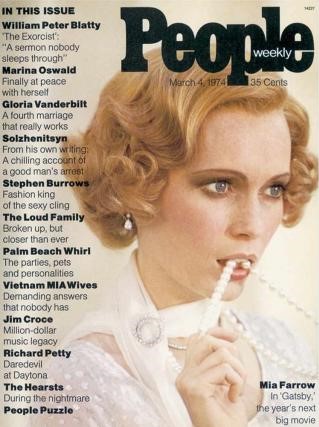 The above quote from John Lennon was from 1980. His discontent with the Indian guru was first expressed on May 14th, 1968 during a New York press conference announcing the launch of The Beatles' corporation Apple, saying, "I think Maharishi was a mistake, but the teachings have got some truth in them." Interviews from John in 1970, however, reveal more pieces to the puzzle. “I wouldn't write 'Maharishi, what have you done, you made a fool of everyone,' but now it can be told, fab listeners...That was about the Maharishi...There was a big hullabaloo about him trying to rape Mia Farrow, and things like that. So we went to see him. I was the spokesman, as usual whenever the dirty work came. I said, 'We're leaving.' He asked, 'Why?,' and all that sh*t, and I said, 'Well, if you're so cosmic, you'll know why.'” The above quote from John Lennon was from 1980. His discontent with the Indian guru was first expressed on May 14th, 1968 during a New York press conference announcing the launch of The Beatles' corporation Apple, saying, "I think Maharishi was a mistake, but the teachings have got some truth in them." Interviews from John in 1970, however, reveal more pieces to the puzzle. “I wouldn't write 'Maharishi, what have you done, you made a fool of everyone,' but now it can be told, fab listeners...That was about the Maharishi...There was a big hullabaloo about him trying to rape Mia Farrow, and things like that. So we went to see him. I was the spokesman, as usual whenever the dirty work came. I said, 'We're leaving.' He asked, 'Why?,' and all that sh*t, and I said, 'Well, if you're so cosmic, you'll know why.'”
 The Beatles left for India to study Transcendental Meditation with the Maharishi Mahesh Yogi in February of 1968. Ringo, Paul and their significant others left by the end of March but George, John and their wives were planning on staying to complete the course, which wasn't due to end until April 25th. However, other developments occurred that resulted in them leaving early as well. The Beatles left for India to study Transcendental Meditation with the Maharishi Mahesh Yogi in February of 1968. Ringo, Paul and their significant others left by the end of March but George, John and their wives were planning on staying to complete the course, which wasn't due to end until April 25th. However, other developments occurred that resulted in them leaving early as well.
 George's wife Pattie Boyd, in her book “Wonderful Tonight,” explains: “When we had been there for four weeks, Magic Alex arrived. He was a young Greek who had attached himself to The Beatles, and Jenny Boyd (Pattie's sister) was renting a room in his house. His name was Alex Mardas...He came because he didn't approve of The Beatles' meditating, and he wanted John back.” In Paul's book “Many Years From Now,” co-author Barry Miles writes: “Alex had been introduced to the others as John's guru and he could see that his position was about to be usurped by the Maharishi, particularly if John gave up drugs permanently.” George's wife Pattie Boyd, in her book “Wonderful Tonight,” explains: “When we had been there for four weeks, Magic Alex arrived. He was a young Greek who had attached himself to The Beatles, and Jenny Boyd (Pattie's sister) was renting a room in his house. His name was Alex Mardas...He came because he didn't approve of The Beatles' meditating, and he wanted John back.” In Paul's book “Many Years From Now,” co-author Barry Miles writes: “Alex had been introduced to the others as John's guru and he could see that his position was about to be usurped by the Maharishi, particularly if John gave up drugs permanently.”
 In her book "Wonderful Tonight," Pattie Boyd continues: “Then everything went horribly wrong. Mia Farrow told John she thought Maharishi had been behaving inappropriately. I think he made a pass at her. John threw a hissy fit. 'Come on, we're leaving.' Then Magic Alex claimed that Maharishi had tried something with a girl he had befriended. I am not sure how true that was. I think Alex wanted to get John away from Rishikesh – he seemed convinced that Maharishi was evil. He kept saying, 'It's black magic.' And perhaps John had been waiting for an excuse to leave – he wanted to be with Yoko. Whatever the truth, they left.” In her book "Wonderful Tonight," Pattie Boyd continues: “Then everything went horribly wrong. Mia Farrow told John she thought Maharishi had been behaving inappropriately. I think he made a pass at her. John threw a hissy fit. 'Come on, we're leaving.' Then Magic Alex claimed that Maharishi had tried something with a girl he had befriended. I am not sure how true that was. I think Alex wanted to get John away from Rishikesh – he seemed convinced that Maharishi was evil. He kept saying, 'It's black magic.' And perhaps John had been waiting for an excuse to leave – he wanted to be with Yoko. Whatever the truth, they left.”
 John's wife Cynthia (Lennon) concurs: “Alexis (Magic Alex) and a fellow female meditator began to sow the seeds of doubt into very open minds...Alexis's statements about how the Maharishi had been indiscreet with a certain lady, and what a blackguard he had turned out to be, gathered momentum. All, may I say, without a single shred of evidence or justification. It was obvious to me that Alexis wanted out and more than anything he wanted The Beatles out as well.” John's wife Cynthia (Lennon) concurs: “Alexis (Magic Alex) and a fellow female meditator began to sow the seeds of doubt into very open minds...Alexis's statements about how the Maharishi had been indiscreet with a certain lady, and what a blackguard he had turned out to be, gathered momentum. All, may I say, without a single shred of evidence or justification. It was obvious to me that Alexis wanted out and more than anything he wanted The Beatles out as well.”
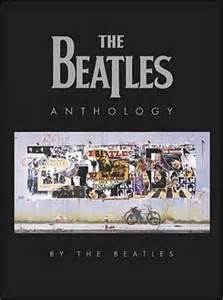 George, of course, was also an eyewitness to these events in India. It the book “Beatles Anthology,” he writes: “Someone started the nasty rumor about Maharishi, a rumor that swept the media for years...This whole piece of bullsh*t was invented. It's probably even in the history books that Maharishi 'tried to attack Mia Farrow' – but it's bullsh*t, total bullsh*t. Just go ask Mia Farrow. There were a lot of flakes there; the whole place was full of flaky people. Some of them were us.” George, of course, was also an eyewitness to these events in India. It the book “Beatles Anthology,” he writes: “Someone started the nasty rumor about Maharishi, a rumor that swept the media for years...This whole piece of bullsh*t was invented. It's probably even in the history books that Maharishi 'tried to attack Mia Farrow' – but it's bullsh*t, total bullsh*t. Just go ask Mia Farrow. There were a lot of flakes there; the whole place was full of flaky people. Some of them were us.”
 Harrison continues: “The story stirred up a situation. John had wanted to leave anyway, so that forced him into the position of thinking: 'OK, now we've got a good reason to get out of here.' We went to Maharishi, and I said, 'Look, I told you I was going'...He couldn't really accept that we were leaving, and he said, 'What's wrong?' That's when John said something like: 'Well, you're supposed to be the mystic, you should know.' We took some cars that had been driven up there...We drove for hours. John had a song he had started to write which he was singing: 'Maharishi, what have you done?' and I said, 'You can't say that, it's ridiculous.' I came up with the title of 'Sexy Sadie' and John changed 'Maharishi' to 'Sexy Sadie.' Harrison continues: “The story stirred up a situation. John had wanted to leave anyway, so that forced him into the position of thinking: 'OK, now we've got a good reason to get out of here.' We went to Maharishi, and I said, 'Look, I told you I was going'...He couldn't really accept that we were leaving, and he said, 'What's wrong?' That's when John said something like: 'Well, you're supposed to be the mystic, you should know.' We took some cars that had been driven up there...We drove for hours. John had a song he had started to write which he was singing: 'Maharishi, what have you done?' and I said, 'You can't say that, it's ridiculous.' I came up with the title of 'Sexy Sadie' and John changed 'Maharishi' to 'Sexy Sadie.'
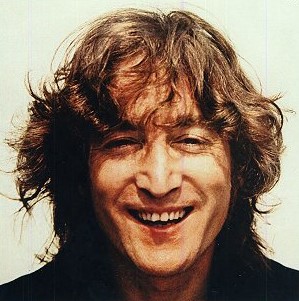 A 1974 Lennon interview validates these events. “That was written just as we were leaving, waiting for our bags to be packed in the taxi that never seemed to come. We thought: 'They're deliberately keeping the taxi back so as we can't escape from this madman's camp.' And we had the mad Greek with us (Magic Alex) who was paranoid as hell. He kept saying, 'It's black magic, black magic. They're gonna keep you here forever.' I must have got away because I'm here!” A 1974 Lennon interview validates these events. “That was written just as we were leaving, waiting for our bags to be packed in the taxi that never seemed to come. We thought: 'They're deliberately keeping the taxi back so as we can't escape from this madman's camp.' And we had the mad Greek with us (Magic Alex) who was paranoid as hell. He kept saying, 'It's black magic, black magic. They're gonna keep you here forever.' I must have got away because I'm here!”
 Paul was filled in about these events after they returned. In the book “Many Years From Now,” he relates: “What happened amazed me. They all came storming back and they came round to Cavendish Avenue...It was a big scandal. Maharishi had tried to get off with one of the chicks. I said, 'Tell me what happened?' John said, 'Remember that blonde American girl with the short hair? Like a Mia Farrow look-alike. She was called Pat or something.' I said, 'Yeah.' He said, 'Well, Maharishi made a pass at her.' So I said, 'Yes? What's wrong with that?' He said, 'Well, you know, he's just a bloody old letch just like everybody else. What the f*ck, we can't go following that!'” Paul was filled in about these events after they returned. In the book “Many Years From Now,” he relates: “What happened amazed me. They all came storming back and they came round to Cavendish Avenue...It was a big scandal. Maharishi had tried to get off with one of the chicks. I said, 'Tell me what happened?' John said, 'Remember that blonde American girl with the short hair? Like a Mia Farrow look-alike. She was called Pat or something.' I said, 'Yeah.' He said, 'Well, Maharishi made a pass at her.' So I said, 'Yes? What's wrong with that?' He said, 'Well, you know, he's just a bloody old letch just like everybody else. What the f*ck, we can't go following that!'”
 Paul continues: “They were scandalized. And I was quite shocked at them; I said, 'But he never said he was a god. In fact very much the opposite. He said, 'Don't treat me like a god, I'm just a meditation teacher.' There was no deal about 'you mustn't touch women,' was there? There was no vow of chastity involved. So I didn't think it was enough cause to leave the whole meditation center...Perhaps they had been looking for something more than a guy and found he wasn't a god, whereas I'd been looking at a guy who was saying, 'I'm only giving you a system of meditation.'” Paul continues: “They were scandalized. And I was quite shocked at them; I said, 'But he never said he was a god. In fact very much the opposite. He said, 'Don't treat me like a god, I'm just a meditation teacher.' There was no deal about 'you mustn't touch women,' was there? There was no vow of chastity involved. So I didn't think it was enough cause to leave the whole meditation center...Perhaps they had been looking for something more than a guy and found he wasn't a god, whereas I'd been looking at a guy who was saying, 'I'm only giving you a system of meditation.'”
Although the original version of the song, however complete it was at the time, was never recorded, John did briefly demonstrate his original conception of the song to Paul during an early recording session at EMI Studios. Committed to tape, John sang: “You little t*at / Who the f*ck do you think you are? / Who the f*ck do you think you are? / Oh, you c*nt.”
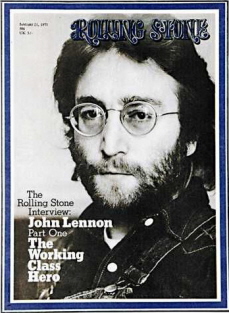 “John wrote 'Sexy Sadie' about that,” Paul continues in “Many Years From Now.” “Righteous indignation! I remember being quite shocked with that. It's really funny, John's reaction to this sexual thing. I mean, maybe say, 'Hey, we thought he was better than that,' but it seemed a little prudish to me, to do that. So I was quite glad I'd left the week before...George persuaded John to change the title and he made the suggestion of 'Sexy Sadie' to protect the innocent. I think George was right. It would have been too hard and it would have actually been, as it turned out, rather untrue, because it was Magic Alex who made the original accusation and I think that it was completely untrue.” And in the “Beatles Anthology” book, Paul adds: “He didn't seem like the kind of guy who would (make a pass). I've since wondered, 'How would a maharishi go about making a pass?' It's not so easy. I don't think any of that happened." In retrospect, John himself admitted to Rolling Stone Magazine's Jann Wenner that he made a mountain out of a molehill, saying, "I was a bit rough on him. I always expect too much. I'm always wanting my mother and don't get her." “John wrote 'Sexy Sadie' about that,” Paul continues in “Many Years From Now.” “Righteous indignation! I remember being quite shocked with that. It's really funny, John's reaction to this sexual thing. I mean, maybe say, 'Hey, we thought he was better than that,' but it seemed a little prudish to me, to do that. So I was quite glad I'd left the week before...George persuaded John to change the title and he made the suggestion of 'Sexy Sadie' to protect the innocent. I think George was right. It would have been too hard and it would have actually been, as it turned out, rather untrue, because it was Magic Alex who made the original accusation and I think that it was completely untrue.” And in the “Beatles Anthology” book, Paul adds: “He didn't seem like the kind of guy who would (make a pass). I've since wondered, 'How would a maharishi go about making a pass?' It's not so easy. I don't think any of that happened." In retrospect, John himself admitted to Rolling Stone Magazine's Jann Wenner that he made a mountain out of a molehill, saying, "I was a bit rough on him. I always expect too much. I'm always wanting my mother and don't get her."
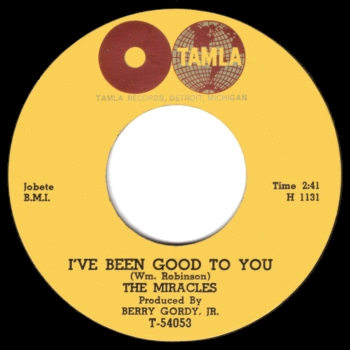 From the above quotes it appears that this “Lennon / McCartney” composition was indeed a 100% Lennon song without any contribution from Paul, a slight nod of acknowledgement to George for the title suggestion being due. Lyrically, however, a slight contribution acknowledgment should also be given to Smokey Robinson because of his song "I've Been Good To You," an early favorite of Lennon's, which begins with the line, "Look what you've done / you've made a fool of someone." Since the date that John confronted the Maharishi and began his trip home was April 12th, 1968, the song began it's formation on this date and was fully written by May 29th of that year, the day he demoed the song at George's "Kinfauns" home. From the above quotes it appears that this “Lennon / McCartney” composition was indeed a 100% Lennon song without any contribution from Paul, a slight nod of acknowledgement to George for the title suggestion being due. Lyrically, however, a slight contribution acknowledgment should also be given to Smokey Robinson because of his song "I've Been Good To You," an early favorite of Lennon's, which begins with the line, "Look what you've done / you've made a fool of someone." Since the date that John confronted the Maharishi and began his trip home was April 12th, 1968, the song began it's formation on this date and was fully written by May 29th of that year, the day he demoed the song at George's "Kinfauns" home.
Recording History
 Although John abandoned his "Maharishi, what have you done" song in place of the title "Sexy Sadie" at the request of George Harrison in April of 1968, John still recorded a half sung, half spoken demo sometime in May of 1968 that recounted his disillusioned feelings about his trip to India. This demo was apparently recorded in John's home studio at his Kenwood residence, Yoko Ono adding a few vocal interjections. This recording, available in bootlegs, has no resemblance to "Sexy Sadie" at all, but has been viewed by many as a precursor to this "White Album" track because of it's subject content. In any event, it makes for an interesting listen. Although John abandoned his "Maharishi, what have you done" song in place of the title "Sexy Sadie" at the request of George Harrison in April of 1968, John still recorded a half sung, half spoken demo sometime in May of 1968 that recounted his disillusioned feelings about his trip to India. This demo was apparently recorded in John's home studio at his Kenwood residence, Yoko Ono adding a few vocal interjections. This recording, available in bootlegs, has no resemblance to "Sexy Sadie" at all, but has been viewed by many as a precursor to this "White Album" track because of it's subject content. In any event, it makes for an interesting listen.
 John recorded an official demo version of “Sexy Sadie” with all lyrics in place on May 29th, 1968 at George Harrison's 'Kinfauns' home in Esher, Surrey. The Beatles met there to record onto George's Ampex four-track machine the songs they had recently written that were under consideration for their next album, this becoming the “White Album.” The demo consists of John double-tracking himself on acoustic guitar and vocals with slight accompaniment by the other Beatles on maracas, tambourine and bongos (or the back of an acoustic guitar). The lyrics were all in place, but the arrangement and structure needed to be fleshed out in the studio. In order to add to the illusion that the song was really about a seductress, John jokingly adds some lovesick repetitions of "Oh, Sadie" as the performance winds down. John recorded an official demo version of “Sexy Sadie” with all lyrics in place on May 29th, 1968 at George Harrison's 'Kinfauns' home in Esher, Surrey. The Beatles met there to record onto George's Ampex four-track machine the songs they had recently written that were under consideration for their next album, this becoming the “White Album.” The demo consists of John double-tracking himself on acoustic guitar and vocals with slight accompaniment by the other Beatles on maracas, tambourine and bongos (or the back of an acoustic guitar). The lyrics were all in place, but the arrangement and structure needed to be fleshed out in the studio. In order to add to the illusion that the song was really about a seductress, John jokingly adds some lovesick repetitions of "Oh, Sadie" as the performance winds down.
 The first time “Sexy Sadie” was brought into EMI Studios was on July 19th, 1968, the group entering EMI Studio Two at about 7:30 pm for what became a rather impromptu session that lasted until 4 am the following morning. The instrumentation comprised Ringo's drums on track one, John's acoustic guitar and George's electric guitar on track two, Paul on organ on track three and John's vocal on track four. The first time “Sexy Sadie” was brought into EMI Studios was on July 19th, 1968, the group entering EMI Studio Two at about 7:30 pm for what became a rather impromptu session that lasted until 4 am the following morning. The instrumentation comprised Ringo's drums on track one, John's acoustic guitar and George's electric guitar on track two, Paul on organ on track three and John's vocal on track four.
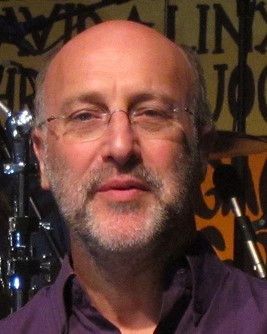 With George Martin and the engineers in place, the majority of the day was just spent jamming on various things that popped into The Beatles' minds, some of which made it onto a personal tape The Beatles wanted to compile of “interesting bits and pieces.” Author and historian Mark Lewisohn was treated (or subjected) to a listen to the entire contents of this day's activities on tape. In his “Recording Sessions” book, he states that it included “crude run-throughs of 'Sexy Sadie' with plenty of good humored Lennon cusses, a new two-verse spur-of-the-moment Lennon song rather uncomplimentary to the memory of Brian Epstein and to his brother Clive, and then a near six minute instrumental jam of George Gershwin's 'Summertime,' doubtless inspired by the 1958 rock version – albeit not an instrumental – by Gene Vincent and His Blue Caps.” With George Martin and the engineers in place, the majority of the day was just spent jamming on various things that popped into The Beatles' minds, some of which made it onto a personal tape The Beatles wanted to compile of “interesting bits and pieces.” Author and historian Mark Lewisohn was treated (or subjected) to a listen to the entire contents of this day's activities on tape. In his “Recording Sessions” book, he states that it included “crude run-throughs of 'Sexy Sadie' with plenty of good humored Lennon cusses, a new two-verse spur-of-the-moment Lennon song rather uncomplimentary to the memory of Brian Epstein and to his brother Clive, and then a near six minute instrumental jam of George Gershwin's 'Summertime,' doubtless inspired by the 1958 rock version – albeit not an instrumental – by Gene Vincent and His Blue Caps.”
After this shenanigans was over, The Beatles ran through 21 proper takes of “Sexy Sadie,” although these recordings sounded more like a rehearsal than a strict attempt at recording the song. The first take began with John yelling up to the producer in the control room “See if we're all in tune, George!”
 Some evidence of what they recorded on this day can be heard on official releases, the first being "take three" on the Super Deluxe 50th Anniversay edition of the "White Album." Before this take begins, George Harrison comments on their progress by singing "It's getting better all the time," which prompts John to answer, "Is it? Right." George then asks the composer, "How fast, John?", to which he replies, "However you like, you know, feel it." The take shows that Paul alternated between organ and piano, although he predominently played organ while Ringo added a good amount of drum fills where he felt they were needed. Some evidence of what they recorded on this day can be heard on official releases, the first being "take three" on the Super Deluxe 50th Anniversay edition of the "White Album." Before this take begins, George Harrison comments on their progress by singing "It's getting better all the time," which prompts John to answer, "Is it? Right." George then asks the composer, "How fast, John?", to which he replies, "However you like, you know, feel it." The take shows that Paul alternated between organ and piano, although he predominently played organ while Ringo added a good amount of drum fills where he felt they were needed.
 "Take six" was featured on the “Anthology 3” compilation album, which shows that George had decided to apply a slight vibrato effect from his amplifier by this point. This take was faded out early on this release because “the coda had not been finalized,” as Mark Lewisohn states in the album's liner notes. In fact, the lengths of the song on the takes recorded on this day varied from 5:36 to just over 8 minutes, indicating that they didn't as of yet quite know how to bring the song to a conclusion. The tempo of "take eight" picked up a little bit, which promped John to suggest, "a bit less frantic, everyone - it seems to be getting heavy" before the eight minute "take nine" began. "Take six" was featured on the “Anthology 3” compilation album, which shows that George had decided to apply a slight vibrato effect from his amplifier by this point. This take was faded out early on this release because “the coda had not been finalized,” as Mark Lewisohn states in the album's liner notes. In fact, the lengths of the song on the takes recorded on this day varied from 5:36 to just over 8 minutes, indicating that they didn't as of yet quite know how to bring the song to a conclusion. The tempo of "take eight" picked up a little bit, which promped John to suggest, "a bit less frantic, everyone - it seems to be getting heavy" before the eight minute "take nine" began.
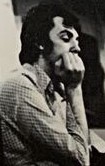 Other comments caught on tape during these takes were Paul lamenting, "It's all right to go through all of this," John relating, "I'm trying not to think of anything - that's a hard job," and Yoko piping in that she thought they could do it better, which prompted John to reply, "Well, maybe I can!" After all twenty-one takes of the song were recorded, John enquired, generally, "I don't like the sound very much for a kick-off - does anybody?" The tape was stopped before an audible answer was heard, but apparently it was agreed that they would begin fresh at a future time, this session ending at 4 am the following morning. Other comments caught on tape during these takes were Paul lamenting, "It's all right to go through all of this," John relating, "I'm trying not to think of anything - that's a hard job," and Yoko piping in that she thought they could do it better, which prompted John to reply, "Well, maybe I can!" After all twenty-one takes of the song were recorded, John enquired, generally, "I don't like the sound very much for a kick-off - does anybody?" The tape was stopped before an audible answer was heard, but apparently it was agreed that they would begin fresh at a future time, this session ending at 4 am the following morning.
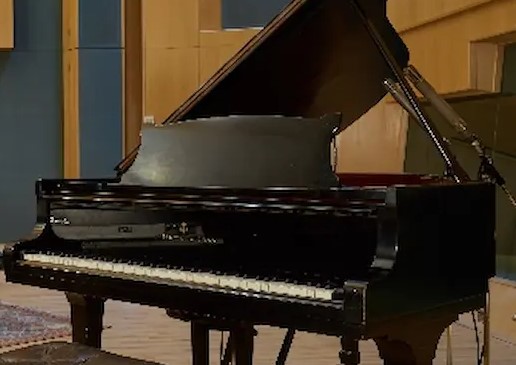 Five days later, on July 24th, 1968, they started from scratch on “Sexy Sadie.” They entered EMI Studio Two at around 7 pm and recorded 23 more takes of the song, labeled "takes 25 through 47" (skipping number 22 through 24 for some reason). The instrumentation was the same as before, John on guitar and vocals, Paul on organ and sometimes piano, George on guitar and Ringo on drums. George still began the song with his jazzy guitar piece as played on earlier takes while Paul worked out the piano intro that eventually made it onto the released version. Evidence of them still struggling with the song is heard at the end of "take 28" where John calls up to the control room, “Were any of them any good?” Before "take 39," John encouraged his bandmates with the Shakesperean exhortation, "Once more unto the breach!" Five days later, on July 24th, 1968, they started from scratch on “Sexy Sadie.” They entered EMI Studio Two at around 7 pm and recorded 23 more takes of the song, labeled "takes 25 through 47" (skipping number 22 through 24 for some reason). The instrumentation was the same as before, John on guitar and vocals, Paul on organ and sometimes piano, George on guitar and Ringo on drums. George still began the song with his jazzy guitar piece as played on earlier takes while Paul worked out the piano intro that eventually made it onto the released version. Evidence of them still struggling with the song is heard at the end of "take 28" where John calls up to the control room, “Were any of them any good?” Before "take 39," John encouraged his bandmates with the Shakesperean exhortation, "Once more unto the breach!"
 Before "take 47," however, producer George Martin apparently voiced his dissatisfaction with the results so far, which prompted George Harrison to sternly reply, "There's no point in Mr. Martin being uptight, right? We're all here to do this. I mean, you're being very negative." This interchange resulted in the following take, "take 47," being labeled as best of the day, although after the follwing unannounced "take 48" George Martin still suggested that they "could do a better one." George Harrison, however, had calmed down by this point, assuring everyone that he was "feeling much better now." Before "take 47," however, producer George Martin apparently voiced his dissatisfaction with the results so far, which prompted George Harrison to sternly reply, "There's no point in Mr. Martin being uptight, right? We're all here to do this. I mean, you're being very negative." This interchange resulted in the following take, "take 47," being labeled as best of the day, although after the follwing unannounced "take 48" George Martin still suggested that they "could do a better one." George Harrison, however, had calmed down by this point, assuring everyone that he was "feeling much better now."
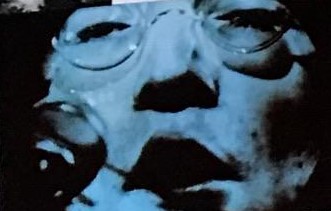 At the end of this session, John was forced to acknowledge, "It's killing," indicating that the song was just not coming together as he intended, even though "take 47" had been documented as the best so far. Paul replied, "Yeah, I know. It's not very good," which prompted John to say, "It's because we stopped believing in it. We forgot what it's about." The above mentioned demonstration of the crude "Maharishi" version of the song was then captured on tape, resulting in Paul suggesting "that perhaps it was better that the song was now more sympathetic." By 2:30 am the following day, after some unused sound effects were recorded, the session was over with nothing ever being officially released from this day's efforts. At the end of this session, John was forced to acknowledge, "It's killing," indicating that the song was just not coming together as he intended, even though "take 47" had been documented as the best so far. Paul replied, "Yeah, I know. It's not very good," which prompted John to say, "It's because we stopped believing in it. We forgot what it's about." The above mentioned demonstration of the crude "Maharishi" version of the song was then captured on tape, resulting in Paul suggesting "that perhaps it was better that the song was now more sympathetic." By 2:30 am the following day, after some unused sound effects were recorded, the session was over with nothing ever being officially released from this day's efforts.
 “Sexy Sadie” was then put on the back-burner for about three weeks with attention given to various other songs, the most noteworthy being “Hey Jude.” Then, on August 13th, 1968, they returned their attention to the song, recording a re-remake from scratch. The group entered EMI Studio Two at around 7 pm and, starting off at a rounded-off number of “take 100,” they recorded eight more attempts at the rhythm track. This instrumentation this time around was Ringo on drums with George on tambourine on track one, Paul on piano recorded with an echo effect on track two, and John's electric guitar recorded with microphones placed at different distances from the speaker cabinet on tracks three and four of the four-track tape. John's guide vocals, although not miked, were detectible at times on the other open mikes. “Sexy Sadie” was then put on the back-burner for about three weeks with attention given to various other songs, the most noteworthy being “Hey Jude.” Then, on August 13th, 1968, they returned their attention to the song, recording a re-remake from scratch. The group entered EMI Studio Two at around 7 pm and, starting off at a rounded-off number of “take 100,” they recorded eight more attempts at the rhythm track. This instrumentation this time around was Ringo on drums with George on tambourine on track one, Paul on piano recorded with an echo effect on track two, and John's electric guitar recorded with microphones placed at different distances from the speaker cabinet on tracks three and four of the four-track tape. John's guide vocals, although not miked, were detectible at times on the other open mikes.
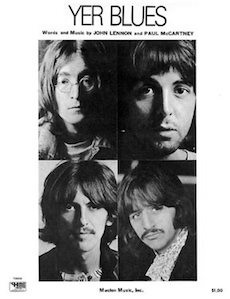 These eight new 'takes' were very spirited and played at a slightly faster tempo, Paul's piano replacing George's jazzy guitar intro from the previous sessions. Everyone was satisfied with "take 107," this now being used for overdubbing. John sang a lead vocal onto track four, which wiped out one of his guitar tracks, this prompting a reduction mix to be made since all four tracks of the tape were now filled. Four attempts at a reduction mix were made on this day, numbered "take 108" through "take 111," which combined John's guitar with Paul's piano on track two, thus opening up track three for more overdubs. The group then took to recording yet another Lennon composition entitled "Yer Blues" until 5:30 am the following morning, when they finally called it for the night. These eight new 'takes' were very spirited and played at a slightly faster tempo, Paul's piano replacing George's jazzy guitar intro from the previous sessions. Everyone was satisfied with "take 107," this now being used for overdubbing. John sang a lead vocal onto track four, which wiped out one of his guitar tracks, this prompting a reduction mix to be made since all four tracks of the tape were now filled. Four attempts at a reduction mix were made on this day, numbered "take 108" through "take 111," which combined John's guitar with Paul's piano on track two, thus opening up track three for more overdubs. The group then took to recording yet another Lennon composition entitled "Yer Blues" until 5:30 am the following morning, when they finally called it for the night.
 An extensively long recording session (nearly 12 hours) on August 21st, 1968 brought “Sexy Sadie” to its final releasable state. The session began at 7:30 pm in EMI Studio Two while awaiting George Harrison's return from his visit to Greece on this day. The reduction mixes done at the previous session were deemed unusable for some reason, so another tape reduction of “take 107” was done, this becoming “take 112.” Onto this was recorded undocumented overdubs, which prompted another set of attempts at a reduction mix to open up another track, these numbered "take 113" to "take 115." Onto "take 115," more undocumented overdubs were recorded, which prompted yet another set of reduction mixes, these numbered "take 116" and "take 117." An extensively long recording session (nearly 12 hours) on August 21st, 1968 brought “Sexy Sadie” to its final releasable state. The session began at 7:30 pm in EMI Studio Two while awaiting George Harrison's return from his visit to Greece on this day. The reduction mixes done at the previous session were deemed unusable for some reason, so another tape reduction of “take 107” was done, this becoming “take 112.” Onto this was recorded undocumented overdubs, which prompted another set of attempts at a reduction mix to open up another track, these numbered "take 113" to "take 115." Onto "take 115," more undocumented overdubs were recorded, which prompted yet another set of reduction mixes, these numbered "take 116" and "take 117."
 One final undocumented overdub was made onto "take 117," the final result being Paul's overdubbed bass on track one, Ringo's drums on track two, and John's lead vocals, Ringo on tambourine and Paul on organ all on track four. Track three, however, contained a huge amount of elements all mixed together because of the various reduction mixes, comprising three electric guitars (John on rhythm and George double-tracking lead guitar lines), Paul on piano, backing vocals from John, Paul and George with ADT ("Artificial Double-Tracking") applied when transferred from the previous tape's track three, and a second piano part from Paul. It was only two weeks later that eight-track capability became available at EMI Studios, which would have allowed much more flexibility in the recording process and not resulted in so many elements being reduced to one track as on this recording. One final undocumented overdub was made onto "take 117," the final result being Paul's overdubbed bass on track one, Ringo's drums on track two, and John's lead vocals, Ringo on tambourine and Paul on organ all on track four. Track three, however, contained a huge amount of elements all mixed together because of the various reduction mixes, comprising three electric guitars (John on rhythm and George double-tracking lead guitar lines), Paul on piano, backing vocals from John, Paul and George with ADT ("Artificial Double-Tracking") applied when transferred from the previous tape's track three, and a second piano part from Paul. It was only two weeks later that eight-track capability became available at EMI Studios, which would have allowed much more flexibility in the recording process and not resulted in so many elements being reduced to one track as on this recording.
 The song was now finally complete, the session ending with the official mono mix being created by George Martin and engineers Ken Scott and John Smith. Five attempts were made at creating this mono mix, 'remix 5' being 39 seconds longer than what was eventually released on the “White Album” because of the inclusion of an instrumental version of the bridge during the close of the song which was edited out on the released mono mix. A tape copy of this longer mix was made on August 23rd, 1968 which was taken away by Mal Evans and given to Ringo who thereby gave it to his friend Peter Sellers, this extended version eventually appearing on bootleg albums. This extra instrumental bridge was edited out of the master mono version of the song sometime before the mono master of the "White Album" was prepared, possibly during the 24-hour session on October 16th / 17th when the album was banded together for official release. The song was now finally complete, the session ending with the official mono mix being created by George Martin and engineers Ken Scott and John Smith. Five attempts were made at creating this mono mix, 'remix 5' being 39 seconds longer than what was eventually released on the “White Album” because of the inclusion of an instrumental version of the bridge during the close of the song which was edited out on the released mono mix. A tape copy of this longer mix was made on August 23rd, 1968 which was taken away by Mal Evans and given to Ringo who thereby gave it to his friend Peter Sellers, this extended version eventually appearing on bootleg albums. This extra instrumental bridge was edited out of the master mono version of the song sometime before the mono master of the "White Album" was prepared, possibly during the 24-hour session on October 16th / 17th when the album was banded together for official release.
 The stereo mix of the song, with the instrumental bridge edited out, was made in the control room of EMI Studio Two by George Martin and engineers Ken Scott and John Smith on October 14th, 1968. Subtle differences in the stereo mix are found in the song's introduction, an extra tapping sound being heard as well as Paul's bass which was faded down in the mono mix. The stereo mix of the song, with the instrumental bridge edited out, was made in the control room of EMI Studio Two by George Martin and engineers Ken Scott and John Smith on October 14th, 1968. Subtle differences in the stereo mix are found in the song's introduction, an extra tapping sound being heard as well as Paul's bass which was faded down in the mono mix.
The Beatles touched on "Sexy Sadie" on January 29th, 1969 during their recording sessions at Apple Studios on Savile Row in London for what became the "Let It Be" album and film. Of course, this session never saw an official release.
 George Martin's son Giles Martin, along with engineer Sam Okell, returned to the master tapes to create a vibrant new stereo mix of "Sexy Sadie" for inclusion on the various editions of the "White Album" for its 50th Anniversay. They also created a stereo mix of the Esher demo of the song The Beatles recorded on May 29th, 1968, as well as "take three" of the song as recorded in EMI Studio Two on July 19th of that year. George Martin's son Giles Martin, along with engineer Sam Okell, returned to the master tapes to create a vibrant new stereo mix of "Sexy Sadie" for inclusion on the various editions of the "White Album" for its 50th Anniversay. They also created a stereo mix of the Esher demo of the song The Beatles recorded on May 29th, 1968, as well as "take three" of the song as recorded in EMI Studio Two on July 19th of that year.
 While there was no solo recording of the song by any of The Beatles, an interesting fact is that Ringo mentions the song's title in two of his own solo recordings (“Devil Woman” from his 1973 album “Ringo” and “Drumming Is My Madness” from his 1981 album “Stop And Smell The Roses”) and George in one of his solo songs (“Simply Shady” from the 1974 album “Dark Horse”). While there was no solo recording of the song by any of The Beatles, an interesting fact is that Ringo mentions the song's title in two of his own solo recordings (“Devil Woman” from his 1973 album “Ringo” and “Drumming Is My Madness” from his 1981 album “Stop And Smell The Roses”) and George in one of his solo songs (“Simply Shady” from the 1974 album “Dark Horse”).
Song Structure and Style
 The structure chosen for "Sexy Sadie" is somewhat typical for The Beatles, in this case being 'verse/ verse/ bridge/ verse/ verse/ bridge' (or aabaab) with a simple introduction and faded instrumental conclusion. One thing here that isn't typical is the omission of a concluding verse, although the conclusion actually consists of three instrumental renditions of the verse with little snippets of lyrics from the first and fourth verses thrown in by John. The structure chosen for "Sexy Sadie" is somewhat typical for The Beatles, in this case being 'verse/ verse/ bridge/ verse/ verse/ bridge' (or aabaab) with a simple introduction and faded instrumental conclusion. One thing here that isn't typical is the omission of a concluding verse, although the conclusion actually consists of three instrumental renditions of the verse with little snippets of lyrics from the first and fourth verses thrown in by John.
The introduction is three measures long and is a near replication of what is heard as measures three through five in each of the verses. Paul's piano is the primary focus here, being augmented by some clicks and a couple tambourine hits from Ringo's overdub, as well as Ringo's introductory drum fill in the third measure which brings us nicely into the first verse.
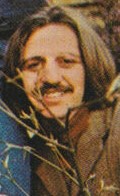 This verse, as well as all of the others, is seven measures long and begins with John on single-tracked lead vocals and quiet rhythm guitar, Paul's piano being the lead instrument along with his overdubbed bass guitar thumping out an impressive (mostly) eighth-note melody line, and Ringo's hi-hat-based simple 4/4 drum beat. George's guitar is present as well, but is discernible only periodically, such as at the end of the second measure. Ringo puts forth a drum fill at the end of the third and seventh measures which both consist of a hi-hat splash followed by a simple fill on mostly the snare drum. John's vocals become double-tracked in the fifth measure for the line “you've made a fool of everyone,” which ushers in John and Paul's backing vocals for the sixth and seventh measures, their melody line consisting of descending eighth-note “wah-wah”s. John's vocals then return to single tracked for the final portion of the verse, this time being “oh, what have you done.” This verse, as well as all of the others, is seven measures long and begins with John on single-tracked lead vocals and quiet rhythm guitar, Paul's piano being the lead instrument along with his overdubbed bass guitar thumping out an impressive (mostly) eighth-note melody line, and Ringo's hi-hat-based simple 4/4 drum beat. George's guitar is present as well, but is discernible only periodically, such as at the end of the second measure. Ringo puts forth a drum fill at the end of the third and seventh measures which both consist of a hi-hat splash followed by a simple fill on mostly the snare drum. John's vocals become double-tracked in the fifth measure for the line “you've made a fool of everyone,” which ushers in John and Paul's backing vocals for the sixth and seventh measures, their melody line consisting of descending eighth-note “wah-wah”s. John's vocals then return to single tracked for the final portion of the verse, this time being “oh, what have you done.”
Verse two is similar in most respects, the continuation of the background vocal “wah-wah”s from the first verse into the second measure of this verse being one difference. Ringo performs similar drum fills in the third and seventh measures but adds an additional one in the fifth measure which doesn't include the hi-hat splash as the others have. It appears that the only double-tracking of John's vocals in this verse is on the word “see” in the sixth measure while the background vocals repeat their performance from the first verse but as “see, see, see” this time around.
 The first bridge is heard next, which is five measures long. Ringo's beat throughout the bridge is focused on the snare and kick drum only without any use of cymbals whatsoever. George plays a fragrant winding lead guitar passage throughout the chord changes of this bridge on "Lucy," his Gibson Les Paul that was gifted to him from Eric Clapton. The overdubbed background vocals play a somewhat big role in this section of the song, slowly holding out the syllables of “se – xy – sad – ie” throughout the first two measures and then, in the fifth measure, quickly singing “sexy sadie – she's the greatest,” mimicking John's lead vocals at that point. Double-tracking is evident in most of John's lead vocals during the bridge, but Paul's piano work is pushed more into the background, revealing instead his Hammond organ chords as a backdrop to the proceedings. The first bridge is heard next, which is five measures long. Ringo's beat throughout the bridge is focused on the snare and kick drum only without any use of cymbals whatsoever. George plays a fragrant winding lead guitar passage throughout the chord changes of this bridge on "Lucy," his Gibson Les Paul that was gifted to him from Eric Clapton. The overdubbed background vocals play a somewhat big role in this section of the song, slowly holding out the syllables of “se – xy – sad – ie” throughout the first two measures and then, in the fifth measure, quickly singing “sexy sadie – she's the greatest,” mimicking John's lead vocals at that point. Double-tracking is evident in most of John's lead vocals during the bridge, but Paul's piano work is pushed more into the background, revealing instead his Hammond organ chords as a backdrop to the proceedings.
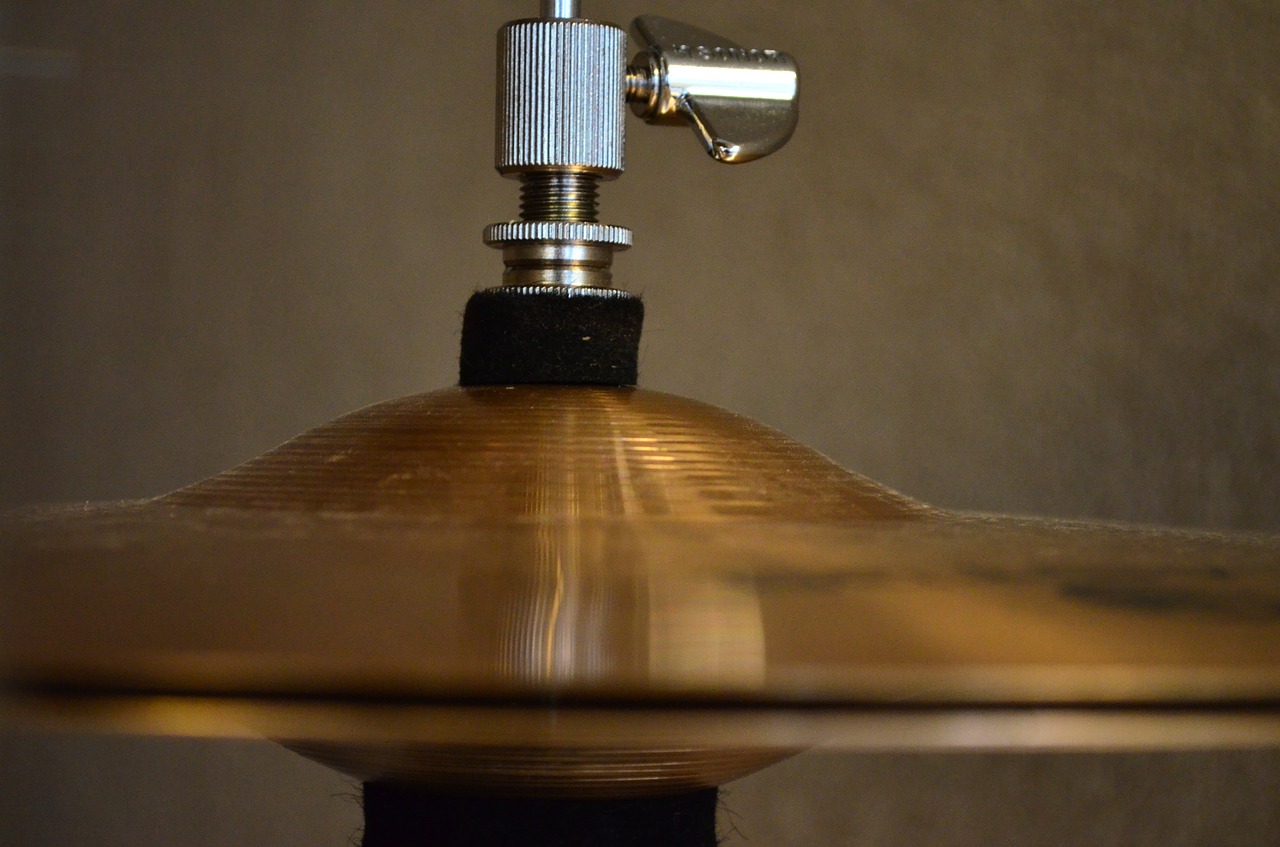 Next comes the third verse, which begins with the background vocals returning to “wah-wah”s into the second measure. Ringo keeps up the snare and kick drum pattern for the first measure of this verse which then results in him performing a drum fill at the end of the first measure to go back to his hi-hat drum pattern from the previous verses, then adding another drum fill in the fifth measure. Paul puts in a frilly piano accent at the end of the second measure while John's lead vocals go in-and-out of double-tracking throughout the verse, most notable on the final line “oh, how did you know.” The background vocals kick back in with “wah-wah”s in the sixth and seventh measures as in the first verse. Next comes the third verse, which begins with the background vocals returning to “wah-wah”s into the second measure. Ringo keeps up the snare and kick drum pattern for the first measure of this verse which then results in him performing a drum fill at the end of the first measure to go back to his hi-hat drum pattern from the previous verses, then adding another drum fill in the fifth measure. Paul puts in a frilly piano accent at the end of the second measure while John's lead vocals go in-and-out of double-tracking throughout the verse, most notable on the final line “oh, how did you know.” The background vocals kick back in with “wah-wah”s in the sixth and seventh measures as in the first verse.
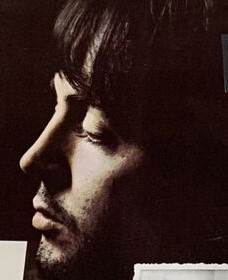 The fourth verse is also similar in many respects, Ringo performing fills in the third, fifth and seventh measures again as he did in the second verse. Paul's frilly piano accent is heard again in the second measure but more prominently this time. The background “wah-wah”s are heard in the usual places, measures one, two, six and seven, while John's vocal double-tracking is still heard periodically as on the phrase “big you are” in the second measure. This goes directly into the second bridge which is virtually a repeat of the first bridge except with different lyrics. The fourth verse is also similar in many respects, Ringo performing fills in the third, fifth and seventh measures again as he did in the second verse. Paul's frilly piano accent is heard again in the second measure but more prominently this time. The background “wah-wah”s are heard in the usual places, measures one, two, six and seven, while John's vocal double-tracking is still heard periodically as on the phrase “big you are” in the second measure. This goes directly into the second bridge which is virtually a repeat of the first bridge except with different lyrics.
 This moves into the song's conclusion which, as stated above, is an instrumental version of the verse repeated three times. (An instrumental bridge was also recorded here but edited out during mixing, as discussed above.) The first measure of the first instrumental verse features the background vocalists quickly singing “sexy sadie, she's the latest and the greatest of them all” as John had just sung at the end of the second bridge. Ringo then comes out of the bridge in the same way as he did from the first bridge, drum fill and all. After a falsetto “Woooo” from John in the second measure, George begins an iconic double-tracked winding guitar figure that nicely permeates the song until it eventually fades away. The tambourine finally makes a reappearance in the song in the fifth measure of this conclusion and continues then throughout the rest of the recording. This moves into the song's conclusion which, as stated above, is an instrumental version of the verse repeated three times. (An instrumental bridge was also recorded here but edited out during mixing, as discussed above.) The first measure of the first instrumental verse features the background vocalists quickly singing “sexy sadie, she's the latest and the greatest of them all” as John had just sung at the end of the second bridge. Ringo then comes out of the bridge in the same way as he did from the first bridge, drum fill and all. After a falsetto “Woooo” from John in the second measure, George begins an iconic double-tracked winding guitar figure that nicely permeates the song until it eventually fades away. The tambourine finally makes a reappearance in the song in the fifth measure of this conclusion and continues then throughout the rest of the recording.
 In the fifth and sixth measures of the first instrumental verse John reprises the line he sang in that spot in the first verse, namely “you made a fool of everyone,” followed by an almost whispered “sexy sadie” in the seventh measure. He repeats the process in the next instrumental verse, singing what he sang in the fourth verse, “however big you think you are.” Other notable features of this conclusion include Ringo adding an interesting added hi-hat beat at the end of many measures as well as various drum fills until the song concludes. Paul noodles around on the piano throughout this conclusion as well as playing chords on his overdubbed Hammond organ, thereby revealing Paul playing two keyboards simultaneously as well as bass guitar during this section of the song. In the fifth and sixth measures of the first instrumental verse John reprises the line he sang in that spot in the first verse, namely “you made a fool of everyone,” followed by an almost whispered “sexy sadie” in the seventh measure. He repeats the process in the next instrumental verse, singing what he sang in the fourth verse, “however big you think you are.” Other notable features of this conclusion include Ringo adding an interesting added hi-hat beat at the end of many measures as well as various drum fills until the song concludes. Paul noodles around on the piano throughout this conclusion as well as playing chords on his overdubbed Hammond organ, thereby revealing Paul playing two keyboards simultaneously as well as bass guitar during this section of the song.
 After around thirty-five hours of studio time, all four Beatles became well acquainted with the song and put in a well-seasoned performance amidst all the “clowning around,” as Ian MacDonald called it in his book "Revolution In The Head," that transpired during these sessions. Lyrically, it is interesting, as well as unfortunate, that due to the change of title and subject matter resulting in a gender alteration, John here continues his usual misogynist view of women, even though it turns out that the song isn't really about a woman at all. Other Lennon Beatle compositions, such as “Run For Your Life,” “You Can't Do That,” “Norwegian Wood” and “Girl” display his negative attitude toward the fairer sex at that time, and this is continued here with phrases like “however big you think you are...you'll get yours yet” and the sarcastic “she's the latest and the greatest of them all.” Fortunately, Yoko brought out much more of his feminist side in his solo career, such as in “Woman Is The N*gger Of The World.” After around thirty-five hours of studio time, all four Beatles became well acquainted with the song and put in a well-seasoned performance amidst all the “clowning around,” as Ian MacDonald called it in his book "Revolution In The Head," that transpired during these sessions. Lyrically, it is interesting, as well as unfortunate, that due to the change of title and subject matter resulting in a gender alteration, John here continues his usual misogynist view of women, even though it turns out that the song isn't really about a woman at all. Other Lennon Beatle compositions, such as “Run For Your Life,” “You Can't Do That,” “Norwegian Wood” and “Girl” display his negative attitude toward the fairer sex at that time, and this is continued here with phrases like “however big you think you are...you'll get yours yet” and the sarcastic “she's the latest and the greatest of them all.” Fortunately, Yoko brought out much more of his feminist side in his solo career, such as in “Woman Is The N*gger Of The World.”
American Releases
The "White Album" was released in the US on November 25th, 1968, "Sexy Sadie" fitting nicely on side three as a tasty bridge between two hard rockers. The album was first released on compact disc on August 24th, 1987, then as a 30th Anniversary limited edition release on November 23rd, 1998, and then as a remastered CD set on November 9th, 2009. The first mono vinyl version of the album didn't hit American shores until September 9th, 2014, while an excellent new stereo vinyl release came out on November 9th, 2018.
.jpg) The song was also featured on the fifth volume of “Playtapes” that Capitol released to comprise the highlights of the “White Album” sometime in 1969. Playtapes were small portable cartridges that only had the capability of including four songs or so, “The Beatles Vol. V” being the title of the release that featured “Sexy Sadie” as its opening track. The song was also featured on the fifth volume of “Playtapes” that Capitol released to comprise the highlights of the “White Album” sometime in 1969. Playtapes were small portable cartridges that only had the capability of including four songs or so, “The Beatles Vol. V” being the title of the release that featured “Sexy Sadie” as its opening track.
 An interesting US vinyl edition of the “White Album” was released on January 7th, 1982, this being manufactured by Mobile Fidelity Sound Lab in Chatsworth, California as part of their "Original Master Recording" series. Their practice was to prepare a new master utilizing half-speed mastering technology from the original master tapes, in this case using the leased sub-master from Capitol Records. This release, which sounded superior to to all previous British and American pressings, was packaged in a non-embossed unnumbered cover that did not include the usual poster/lyric sheet or individual Beatles portraits as contained in standard releases. Nonetheless, this excellent edition of the album was only available for a short time and is quite collectible today. An interesting US vinyl edition of the “White Album” was released on January 7th, 1982, this being manufactured by Mobile Fidelity Sound Lab in Chatsworth, California as part of their "Original Master Recording" series. Their practice was to prepare a new master utilizing half-speed mastering technology from the original master tapes, in this case using the leased sub-master from Capitol Records. This release, which sounded superior to to all previous British and American pressings, was packaged in a non-embossed unnumbered cover that did not include the usual poster/lyric sheet or individual Beatles portraits as contained in standard releases. Nonetheless, this excellent edition of the album was only available for a short time and is quite collectible today.
 October 28th, 1996 was the release date for the compilation album “Anthology 3” which, as stated above, included the original “take six” as recorded on July 19th, 1968. October 28th, 1996 was the release date for the compilation album “Anthology 3” which, as stated above, included the original “take six” as recorded on July 19th, 1968.
The mono version of the song was first released in America as part of the CD box set “The Beatles In Mono,” which was released on September 9th, 2009, the vinyl edition being released on September 9th, 2014.
 Various editions of the "White Album" were released on November 9th, 2018 to commemorate the 50th Anniversary of its original release. The "Deluxe" edition, which was made available in a 3CD set and a limited edition 180-gram 4LP vinyl set, contained the newly created Giles Martin mix of the "White Album" as well as the complete set of Esher demos that The Beatles recorded in late May of 1968. The "Super Deluxe" 6CD + 1Blu-ray edition also contains the original "take three" of the rhythm track (mislabeled as "take 11" in the accompanying book) as recorded on July 19th, 2018. Various editions of the "White Album" were released on November 9th, 2018 to commemorate the 50th Anniversary of its original release. The "Deluxe" edition, which was made available in a 3CD set and a limited edition 180-gram 4LP vinyl set, contained the newly created Giles Martin mix of the "White Album" as well as the complete set of Esher demos that The Beatles recorded in late May of 1968. The "Super Deluxe" 6CD + 1Blu-ray edition also contains the original "take three" of the rhythm track (mislabeled as "take 11" in the accompanying book) as recorded on July 19th, 2018.
Live Performances
Neither The Beatles as a group nor their individual solo members have ever performed “Sexy Sadie” on a live stage. Isn't it a pity?
Conclusion
 While the Maharishi was dumbfounded at Lennon and Harrison leaving India in April of 1968 in such an uproar over something based on such a slim premise, he apparently didn't hold a grudge. Twenty-five years later, in 1993, George and his friend, author Deepak Chopra, visited the Maharishi and took the opportunity to ask him for forgiveness for the song "Sexy Sadie" and any bad press he may have received because of their 1968 visit. "We were very young," Harrison explained. While the Maharishi was dumbfounded at Lennon and Harrison leaving India in April of 1968 in such an uproar over something based on such a slim premise, he apparently didn't hold a grudge. Twenty-five years later, in 1993, George and his friend, author Deepak Chopra, visited the Maharishi and took the opportunity to ask him for forgiveness for the song "Sexy Sadie" and any bad press he may have received because of their 1968 visit. "We were very young," Harrison explained.
This world religious leader replied that he viewed The Beatles as angels in disguise, citing how he heard that, during their first Ed Sullivan Show appearance in February of 1964, no crime was reported in the US. during that hour. “I could never be upset with angels,” he replied.
Song Summary
“Sexy Sadie”
Written by: John Lennon / Paul McCartney
- Song Written: April 12 thru May 29, 1968
- Song Recorded: August 13 and 21, 1968
- First US Release Date: November 25, 1968
- First US Album Release: Apple #SWBO-101 “The Beatles”
- US Single Release: n/a
- Highest Chart Position: n/a
- British Album Release: Apple #PCS 7067-7068 “The Beatles”
- Length: 3:15
- Key: G major
- Producer: George Martin
- Engineers: Ken Scott, John Smith
Instrumentation (most likely):
- John Lennon - Lead and backing vocals, Rhythm Guitar (1964 Gibson J-160E)
- Paul McCartney - Piano (Hamburg Steinway Baby Grand), Organ (Hammond L-100), Bass (1964 Rickenbacker 4001 S), backing vocals
- George Harrison - Lead Guitar (1957 Gibson Les Paul), tambourine
- Ringo Starr - Drums (1964 Ludwig Super Classic Black Oyster Pearl), tambourine
Written and compiled by Dave Rybaczewski
|
IF YOU WOULD LIKE TO MAKE A DONATION TO KEEP THIS WEBSITE UP AND RUNNING, PLEASE CLICK BELOW!
Sign Up Below for our MONTHLY BEATLES TRIVIA QUIZ!
|